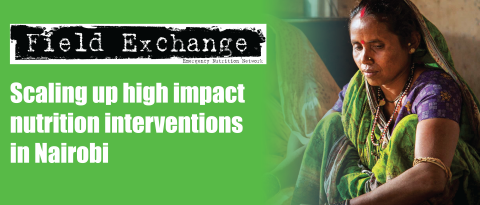Report of the Global Nutrition Cluster side event on Yemen and Sudan
A one-day side meeting convened by the Global Nutrition Cluster (GNC) and hosted by the UNICEF Middle East and North Africa (MENA) regional office was held in Amman, Jordon on 21 October 2018 on the occasion of the GNC three-day annual meeting. Emergency Nutrition Network (ENN) supported country teams to develop background papers and presentations and produced the meeting report.
The aims of the side meeting were to discuss the nutrition situation in Sudan, propose immediate actions to support the Government of Sudan (GoS) in a longer-term comprehensive nutrition approach and identify the operational implications of the ‘Call to Action’ to end malnutrition in Yemen,1 and define the support needed to operationalise the three-year plan. The event brought together 76 participants from Sudan and Yemen, including representatives of government, Nutrition Clusters, the Scaling Up Nutrition (SUN) Movement, United Nations (UN) and non-gonvernmental organisations (NGOs), as well as key donors and GNC partners with an operational presence or interest in the countries.
Representatives from Sudan and Yemen presented an analysis of the nutrition situation in each country, as well as drivers of the current high rates of undernutrition, a description of existing delivery systems and challenges and proposals for next steps. Similar challenges exist in both countries. Both are highly dependent on humanitarian funding, with limited access to longer-term, flexible funding to strengthen government systems. Both countries have challenges coordinating between humanitarian and development partners and between the Nutrition Cluster and the SUN Movement. The integration of nutrition-specific interventions into government health systems is also difficult in both Yemen (where many frontline staff receive no regular salary) and Sudan (where supply chain management and procurement services are managed by external partners). In both countries there has been a lack of progress in scaling up multi-sector programmes; data are out of date and not nationally representative (leaving partners working in a data vacuum); and there are difficulties in the coordination of nutrition programming at all levels.
Participants divided into working groups to examine key issues and identify actions. For Yemen, participants divided into three groups – UN, NGO and donor – to focus on the commitments made in the Call to Action and examine what has been tried, what has worked, what hasn’t and identify clear next steps. For Sudan, groups were divided into three groups by theme to identify ways to move forward in each area: financing (immediate and longer-term); multi-sector nutrition programming; and coordination. Group feedback to all was followed by plenary discussion.
Conclusions included the need for the humanitarian nutrition community to proactively engage with development actors and vice versa. The GNC and the SUN Movement need to move quickly and clearly to develop guidance on strengthening coordination in both countries. Connections between the SUN Movement Secretariat and GNC in Geneva must be re-established and developed further. Opportunities are needed to include longer-term objectives and programming within humanitarian response plans (HRPs) in protracted crises; the Cluster should examine the potential for multi-year HRPs and multi-year humanitarian strategies with the inclusion of development indicators. Greater clarity is needed on transition triggers, agreed milestones and indicators for deactivation of clusters in contexts such as Sudan through a comprehensive transition plan that ensures gradual handover to government. Senior UN officials must encourage donors to provide longer-term flexible funding in protracted crises.
Complex contractual arrangements that vary by UN agency frustrate joined-up severe acute malnutrition (SAM) and moderate acute malnutrition (MAM) programming. This challenge is being examined by the agencies; discussion at this meeting reinforces the necessity and urgency to address this. The continuum of care (i.e. prevention preceding treatment) requires much more effort and investment. This must translate into integrated, high-impact nutrition interventions (HINI), strengthened health systems and multi-sector approaches. In general there is a need to improve the narrative so that there is one common approach that spans humanitarian and development objectives for nutrition.
A meeting report, background papers from Yemen and Sudan and presentations are available here.
Endnote
1Following commitments made at the United Nations Global Assembly (UNGA) in September 2018.


